#domesticated animals
Text

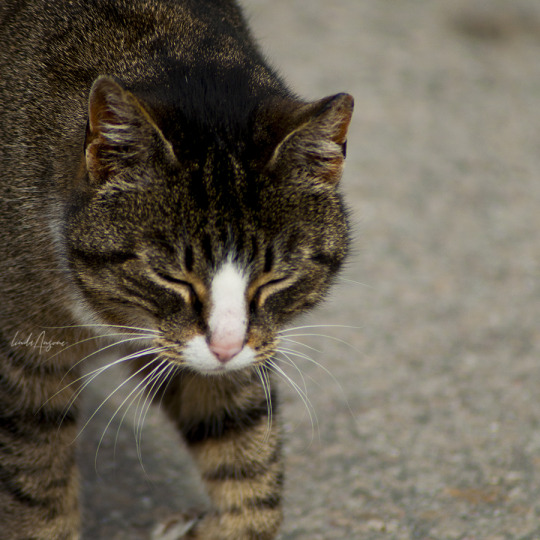
#cat#cats#kitty#cat photos#cat pictures#cat photography#tabby cat#feline#domesticated animals#original photographers#animal photography#photographers on tumblr
26 notes
·
View notes
Text
A study that just came out demonstrates that outdoor cats are known to prey on over two thousands species of wild animal, from mammals to birds to insects. That includes 347 species that are endangered, threatened or otherwise of concern, and they've been a key factor of the permanent extinction of over 60 species. And while cats may not always bring home what they catch, chances are if your cat is allowed to roam unsupervised outside, they're killing your local wildlife.
Why is this so important? Worldwide, wild animal populations have decreased in number by 69% in the past fifty years; that means that in my lifetime (born in 1978), the sheer number of wild animals in the world has been decreased by over half. Even "common" wild species are less numerous than before. While habitat population is the single biggest cause of species endangerment and extinction overall, outdoor and indoor/outdoor cats are a significant cause as well. In fact, they are the single biggest cause of human-caused mortality in wild birds.
Most importantly, it's very, very simple to fix this problem: keep your cats indoors, and spay and neuter them. If your cat is bored, they need more enrichment, and there are plenty of ways to make your home more exciting for them, from bringing home cardboard boxes for them to explore, to playing with them more often. If you want your cat to get some outdoor enrichment, leash train them (yes, it can be done!) If you have the space and resources, build them a catio where they can be safe from outdoor dangers like predators and cars, while also keeping local wildlife safe from them.
If you just give into their whining and pawing at the door, then they know that that's what they have to do to get their way; I know it's a tough transition, but it's worth it in the end for everyone involved. Cats are domesticated, which means they are not native anywhere in the world; there are exactly zero ecosystems in which they belong, save for the safety of your home. It is your responsibility to give them an enriching environment without taking the shortcut of letting them go wreak havoc outside.
#cats#outdoor cats#feral cats#nature#wildlife#animals#ecology#environment#conservation#science#scicomm#birds#endangered species#extinction#domesticated animals#domestication#biology#animal behavior#animal welfare
8K notes
·
View notes
Text
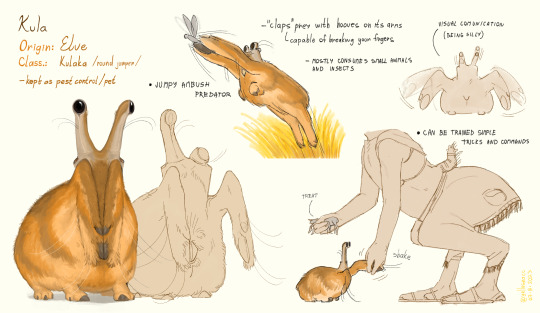
Kula!
A popular domesticated animal of slomen.
Kula are adapted for grassy areas with lots of small prey. In the wild, they either jump after flying or jumping prey or wait at burrows before smashing their prey with their hooves. If the smash isn't enough they hold it to their beak and finish it. Some species are more specialized to wait while others to jump. The domesticated Kula is speculated to be one of the more energetic hunters, mostly interested in 'insects'.
In ancient times wild Kula were attracted to sloman settlements as they would also attract prey with the slomans' food and light.
The slomen would soon learn that Kula were not pests since the wild animals were yet to be spoiled by premium meat cuts and preferred fresh moving meat that the slomen didn't want around.
In current times many cultures keep these animals as pest control on farms and in larger houses. They can be commonly seen in underground rooms that serve as food storage but for a healthy mental state, they need time on the sun.
While in the wild they are usually solitary or in small groups, Kula have a complex body language that they use to express their mood and/or needs. This can be very cute and funny, helping them become as loved as they are.
Many owners will grow to care deeply for their Kula but some cultures recognize them directly as pets. In the high-ranking societies of these cultures, pet Kula get even rounder. Often a certain trait is popular in a culture, resulting in localised breeds with different shapes and colors.

Some little goober possibilities - not entirely canon
In a few places, Kula are also part of a religion and have their own shrines.
#art#speculative biology#artists on tumblr#digital art#artwork#worldbuilding#speculative evolution#fantasy#spec bio#original alien species#original species#spec evo#speculative zoology#xenobiology#domesticated animals#slomen
2K notes
·
View notes
Text
Ever since I learnt pigeons are domesticated, I just want to steal them all when I walk by them on the street
I don't even know how to look after pigeons, but I want to so badly
600 notes
·
View notes
Text
The mare looked at her partly with its eyes, which were small and evil, but mostly with its yellowing teeth, of which it had an enormous amount. She had the impression that it was thinking about sniggering.
"I'll hold him for you while you mount, sir," she said.
"Thank you. He certainly moves about a bit when I try!"
"I expect he does, sir," said Polly. She knew about difficult horses; this one had all the hallmarks of a right bastard, one of those not cowed at all by the obvious superiority of the human race.
Terry Pratchett, Monstrous Regiment
#polly perks#lieutenant blouse#thalacephalos the horse#monstrous regiment#discworld#terry pratchett#character description#horses#domesticated animals#first impressions#the evil eye#evil#soldiers#oblivious#difficult#all the hallmarks of a right bastard#the obvious superiority of the human race
126 notes
·
View notes
Text
#HumpDay anyone? 😉

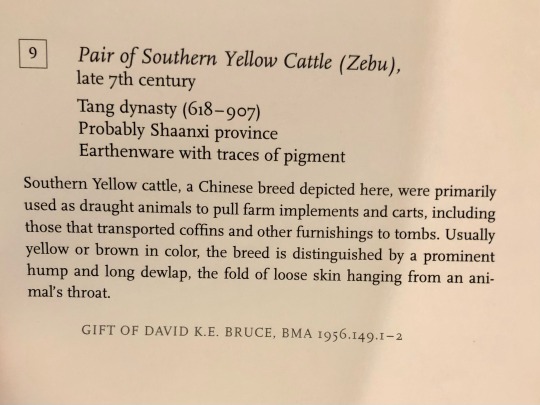
Pair of Southern Yellow Cattle (Zebu)
China (probably Shaanxi province), Tang dynasty (618-907), late 7th century
earthenware w/ traces of pigment
Baltimore Museum of Art
“Southern Yellow cattle, a Chinese breed depicted here, were primarily used as draught animals to pull farm implements and carts, including those that transported coffins and other furnishings to tombs. Usually yellow or brown in color, the breed is distinguished by a prominent hump and long dewlap, the fold of loose skin hanging from an animal's throat.”
#Zebu#cattle#domesticated animals#livestock#Chinese art#East Asian art#Asian art#ancient art#Tang Dynasty#ceramics#pair#Baltimore Museum of Art#HumpDay#museum visit#animals in art
229 notes
·
View notes
Text

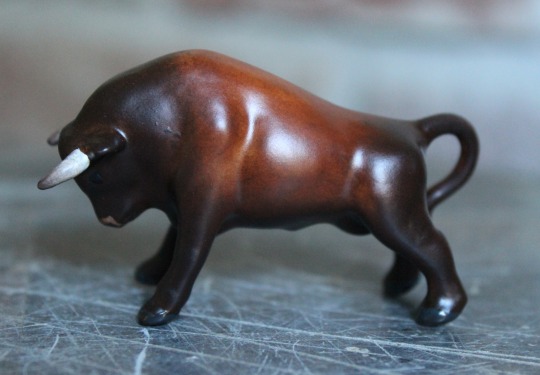
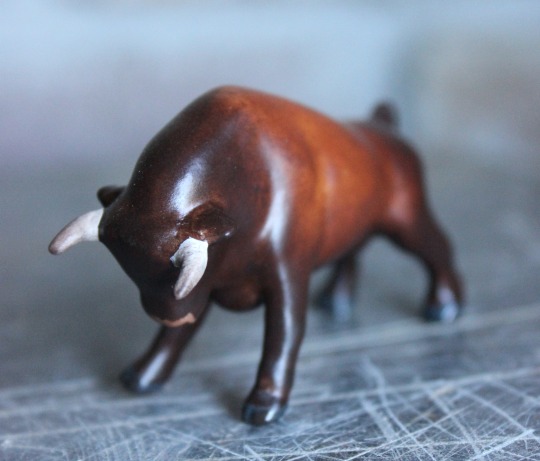
This was a fun little guy to customize! I found this tiny plastic Spanish fighting bull (Toro de Lidia) in an antique shop a while back. He was probably a vintage souvenir from Mexico or Spain, and his original black paint job was flaking off. So he got sanded and repainted to this lovely golden brown--a color I may do on a Breyer in the future since it turned out so nicely. I'm not a fan of bullfighting, so I like to think that he's sparring with another bull, or defending his herd from danger.
He is available at https://www.etsy.com/listing/1667496430/bruno-custom-golden-brown-spanish
#cattle#bull#Toro de Lidia#figurine#miniatures#mini painting#painted minis#miniature animals#animals#domesticated animals#Breyer custom#custom Breyer#not actually a breyer
35 notes
·
View notes
Text

Source: @cryptid_bean on Twitter
#cat#cats#kitten#kitty#cute#cute animals#memories#photo#birthday#party hat#pets#pet#feline#domesticated animals
20 notes
·
View notes
Text
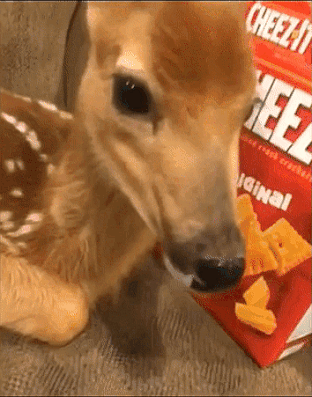
Deer sitting on couch, I guess it likes cheez-its
33 notes
·
View notes
Link
From pulling Mesopotamian war chariots to grinding grain in the Middle Ages, donkeys have carried civilization on their backs for centuries. DNA has now revealed just how ancient humans’ relationship with donkeys really is.
The genetic instruction books of over 200 donkeys from countries around the world show that these beasts of burden were domesticated about 7,000 years ago in East Africa, researchers report in the Sept. 9 Science.
“The history of the donkey has puzzled scientists for years,” says Ludovic Orlando, a molecular archaeologist at the Centre for Anthropobiology and Genomics of Toulouse in France. This discovery shows that donkeys were domesticated in one fell swoop, roughly 3,000 years before horses.
Continue Reading.
319 notes
·
View notes
Text

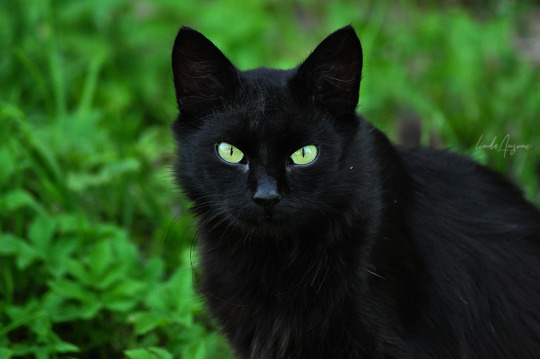
#cat#cats#kitty#cat photos#cat pictures#cat photography#feline#black cats#domesticated animals#animal photography#original photographers#photographers on tumblr#I feel like I've posted very similar photos to these but oh well#she's just too pretty#1k#2k#3k#4k#5k#6k#7k#8k#9k#10k#11k#12k
12K notes
·
View notes
Text

New year, new creature reveal!
This animal is an Iťalaq, a large creature adapted for the hot and dry environment of the east. Just like some earth desert animals, it has energy storage in the form of its watery bloodstream and of a large fat pocket under its 'pelvis'.
They feed primarily on plant matter. Bushes and grasses are easy targets, while hard or spiky materials will get stomped on with their middle limbs to then scoop up the insides. For food high up, they pick on it using their front limbs and throw it to the ground or insert it directly into their mouth. They do not mind a meaty snack.
As a bonus unpleasant fact, Iťalaq have the contents of their 'ends' ready to protect them from predators (both liquid and bullets), and it gets very stinky if they eat meat before the processing.
You are unlikely to ever see one in nature - at least not the domesticated species that are used all over the eastern sloman cultures (those are better reported to the nearest settlement).
Their history with slomen is not as long as it is with pamuli that evolved side by side with slomen. However, they are considered the first domesticated "arm-jaw" animals and have served people for thousands of years as their main "vehicle". Where they are used, wheels and carts are uncommon, finding most use in cities.
One iťalaq can often carry over 200kg (330 pounds), but it's better to keep the weight lower and let a pamuli take the rest of the cargo.
In this illustration, the rider is a sloman matriarch, likely stopping to stare at a strange phenomenon.
It is often that a northeastern family has at least one iťalaq, and the oldest members are the primary riders (both because of the member's importance and less energy from old age). The matriarch is the oldest and most respected, so it's only expected she's most familiar with the animal.

the picture with no text
hope the text wall doesn't have too many mistakes man
#art#speculative biology#artists on tumblr#digital art#artwork#worldbuilding#speculative evolution#spec bio#fantasy#original species#speculative zoology#speculative fiction#xenobiology#slomen#sloman culture#domesticated animals#spec evo#alien animal#elve
455 notes
·
View notes
Text
I don’t know why some people are so obsessed with letting domesticated animals be free as if that would do anything for their well-being.
The whole point of domesticated animals, especially those we keep as pets, is that they were bred to depend on us and be with us. Most of them suffer extremely if left to roam (especially cows will die quickly but horses also) and like bro, if you‘re interested in animal welfare you might want to look into the meat industry or work on generally improving domesticated animals quality of life in all aspects, but turning them free won‘t do it
15 notes
·
View notes
Text
i understand not liking cats. there are just some animals that aren't our favorites and that aren't easy to get along with. what i don't understand is the absolute revolt that people who don't like cats feel towards them. it baffles me, the way people will literally shutter at the mention of cats just because they don't like them.
i myself am not a dog person, but i don't hate dogs or dislike them enough to treat them the way people who don't like cats treat cats. my initial reaction wouldn't be to kick, shove, run over, or shoot one. i wouldn't let loose a dog on the street just because i didn't like it. it's an animal, and it's meant to be cared for. if you don't like an animal and you see it while you're out, you leave it alone. if it's in your possession for whatever reason, you take care of it until you find someone who will care and love for it.
the world gave me reasons to potentially hate dogs, but i didn't take the bait. if you can't handle owning a cat, that's perfectly fine, and if you don’t like them, that's fine too. however, treating them/their existence like they were made to haunt/disturb you is not okay. all animals are just trying to get through life like the rest of us. the things we don't like about them, especially in regards to domesticated animals who often depend on us, are not enough to treat them like trash.
#my post#cats#dogs#animals#cat lovers#cat haters#animal neglect#animal abuse#domesticated animals#pets#strays#pet owners#animal lover#dog lover#cat lover#pet lovers#i do like dogs but i honestly wouldn’t choose to own one myself#my relationship with them is complicated#regardless of my feelings i respect them an their existence#it's really not hard to#same should go for cats for those who don't necessarily like or want them as pets#topic that's been on my mind#yesterday a christian girl said she would kick a cat if it came up and rubbed against her by surprise#and the comments i see under cat videos on insta are insane and hateful and gross#neighbors on the neighborhood app threaten to (and sometimes do) kill their neighbor's cat(s)#it's so gross#and i will never understand it#animal care#animal rights
3 notes
·
View notes
Text
For #WorldGoatDay 🐐:

Terracotta oinochoe: chous (jug)
#AncientGreece, Attic, c. 400 BCE
Terracotta; red-figure, 4in. (10.2cm)
The Metropolitan Museum of Art, New York 21.88.80
Design featuring a boy driving goat-drawn chariot.
#animals in art#goat#goats#domesticated animals#World Goat Day#animal holiday#Metropolitan Muaeum of Art New York#ancient art#greek art#ceramics#pottery#terracotta#red-figure pottery#Mediterranean art#jug#chous#Athenian art
25 notes
·
View notes
Text

❤️Iggy and plushie Jaz❤️
3 notes
·
View notes